- Home
- slideshows
- miscellaneous
- A remote Himalayan lake holds up to 800 skeletons from people who died 1,000 years apart. The mystery remains unsolved.
A remote Himalayan lake holds up to 800 skeletons from people who died 1,000 years apart. The mystery remains unsolved.
For the recent analysis, Harney and her team drilled into the femurs and long arm bones of dozens of skeletons from the lake to extract DNA.

That discovery changed scientists' understanding of Skeleton Lake, since previous research had suggested that most of the bones at the site dated back to the year 800 or so.
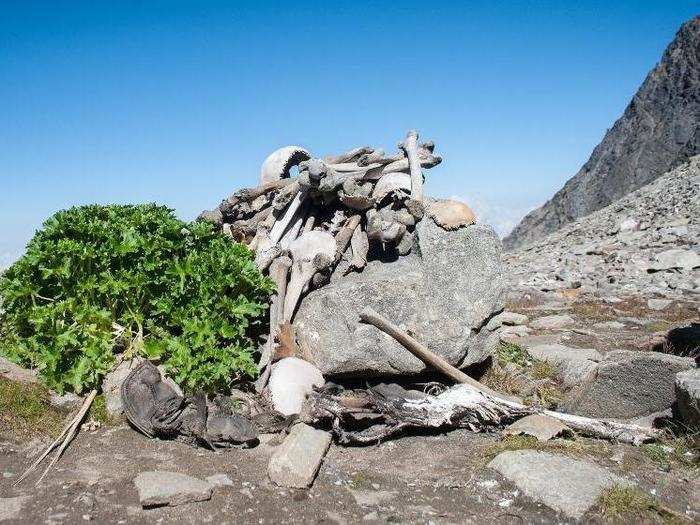
Sax said the new data about a second wave of deaths was "a real stunner."
"The timing of that most recent event — which happened sometime in the last few hundred years — makes it a really interesting puzzle," he added.
Conducting this kind of research at the lake isn't easy. Roopkund, which means "lake of form" in Hindi, is more than 16,500 feet above sea-level.
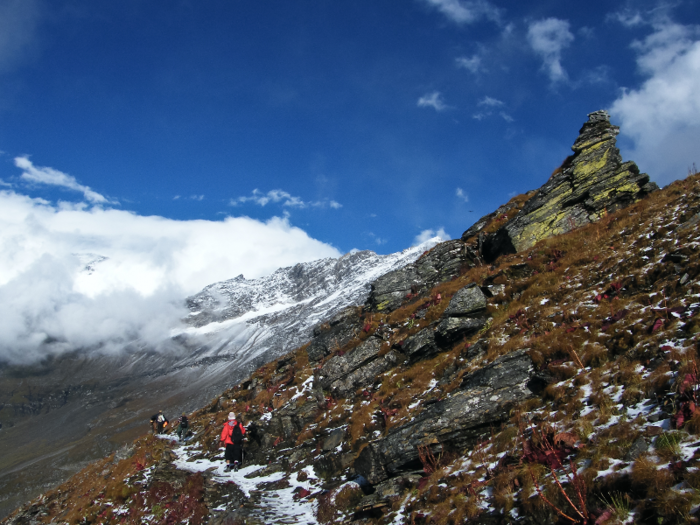
The surrounding environs are breathtakingly beautiful, Sax said. The lake is located in India's Nanda Devi National Park.
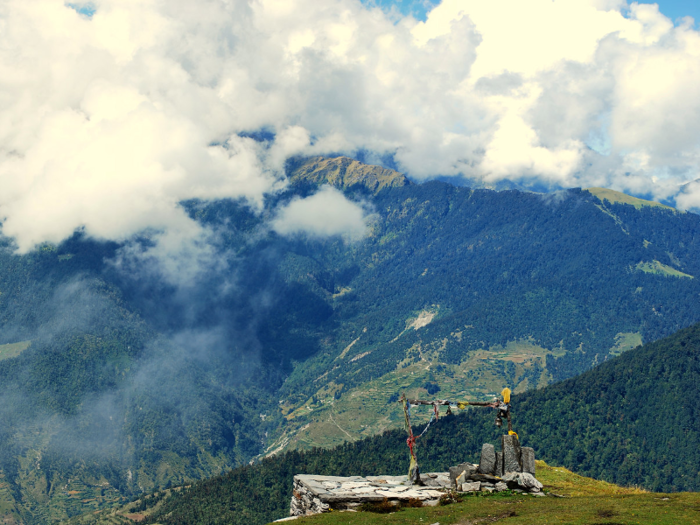
Still, he added, "there's no reason for anybody to be up there." That's what makes the presence of these skeletons so mysterious.
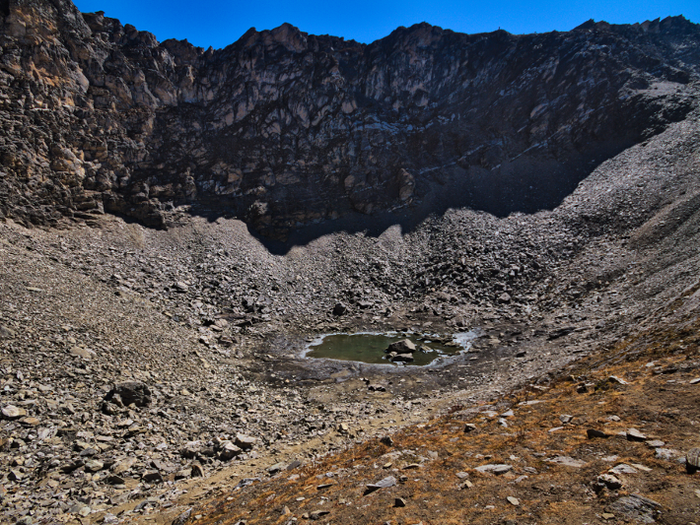
For visitors to the lake, Sax said, the site's macabre history is plainly visible: "You can't take a single step without steeping on bones."
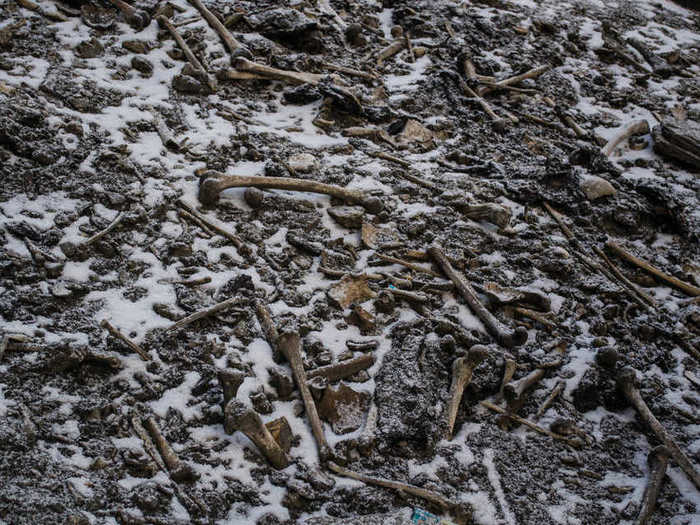
Some travelers have collected the bones and stacked them in piles, out of fascination or perhaps respect. But such human interference disturbs the site, Harney said.
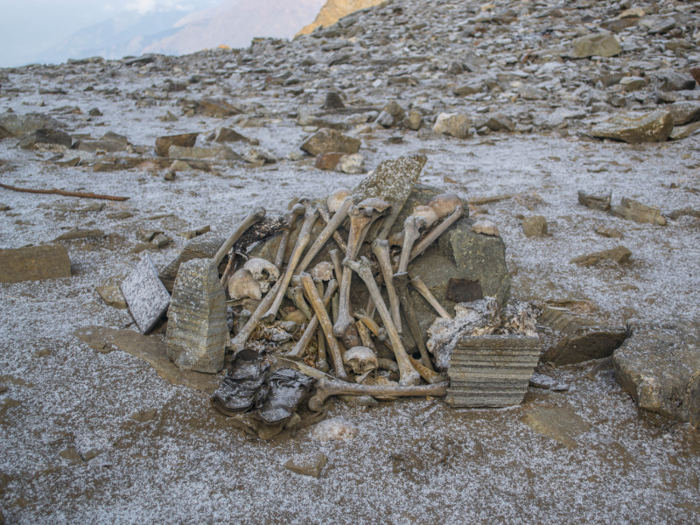
It makes it "quite difficult to perform standard archaeological analyses on these remains," she added.
Some tourists reportedly even take bones away from the site as morbid souvenirs.
Myriad explanations have been put forward as to how these individuals perished, from a freak hailstorm to a mass ritual suicide.
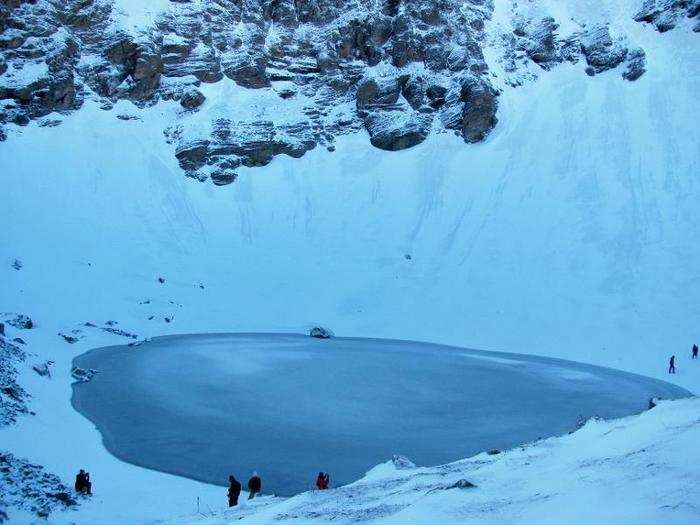
Harney's team thinks it's possible that some people who perished during the first wave of Skeleton Lake deaths experienced "a mass death during a pilgrimage event."
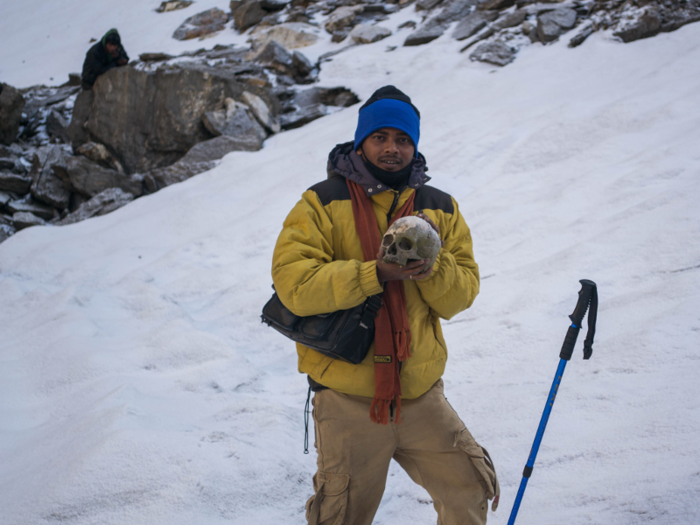
The lake is near a present-day pilgrimage route through the region, the study authors wrote.
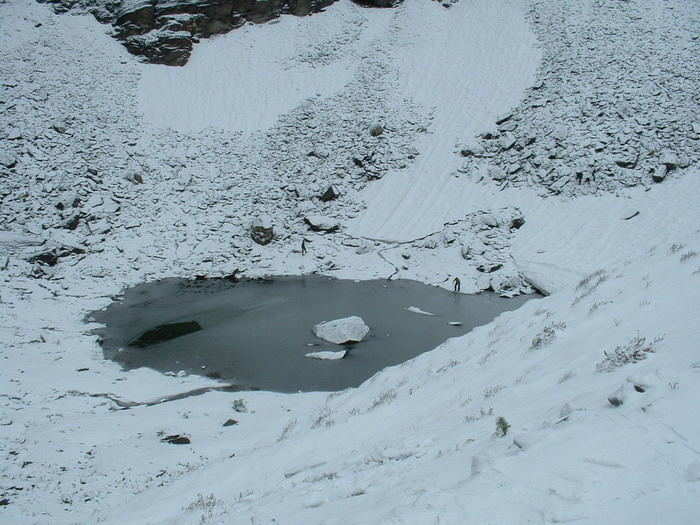
A local folk song even describes a mass pilgrimage to the shrine of a mountain goddess, called Nanda Devi, near the lake.
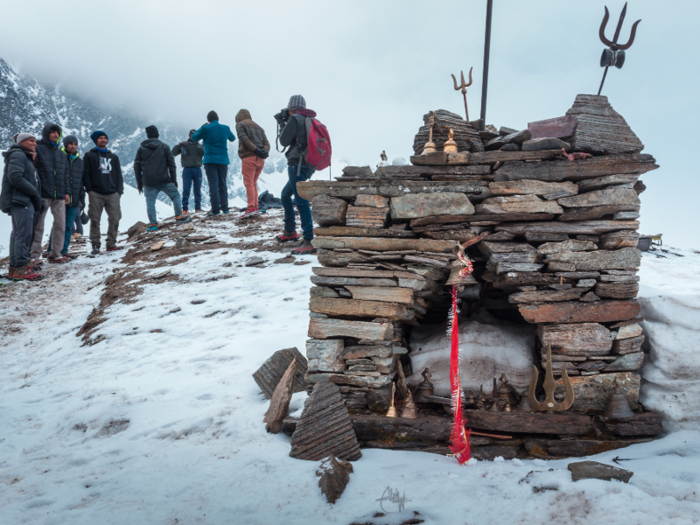
The study authors said the song is about "a king and queen and their many attendants, who — due to their inappropriate, celebratory behavior — were struck down by the wrath of Nanda Devi." The lyrics recount the goddess flinging balls as "hard as iron."
Those balls of iron could have been hail that rained down during a severe storm, according to the study authors.
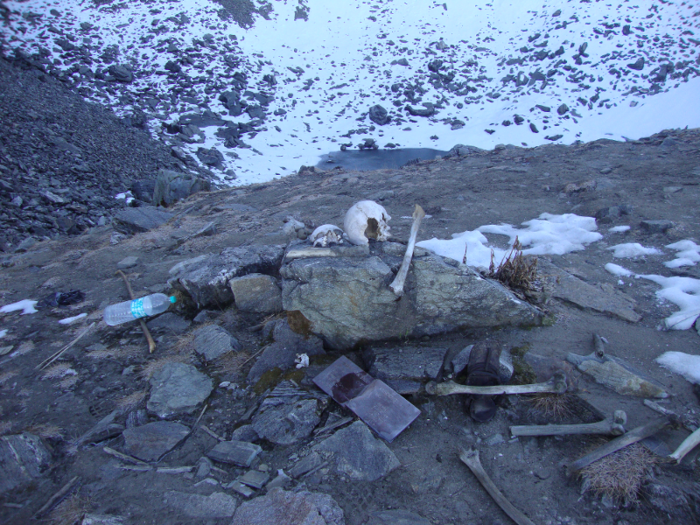
Harney said researchers observed compression fractures on several of the skeletons that might be consistent with injuries from a hailstorm or rockslide.
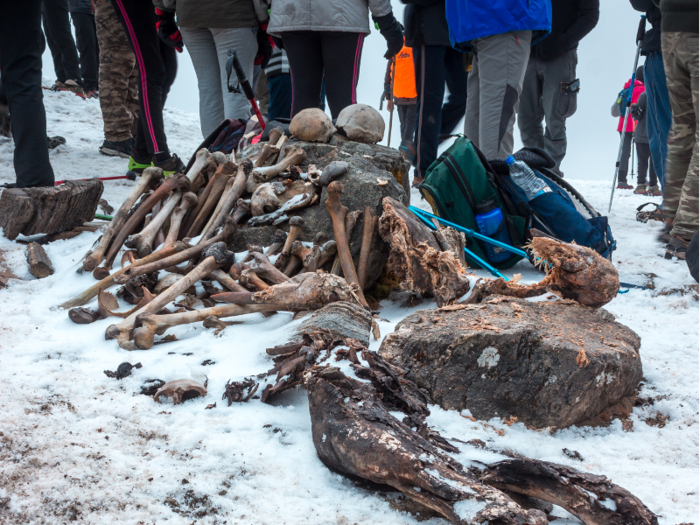
Sax also recalled that some of the skulls found near the lake appeared to have been cracked open, damaged by blunt objects.
Ultimately, though, Harney is hesitant to speculate about any causes of death, since it's not possible to determine that information through the genetic analysis her team completed.
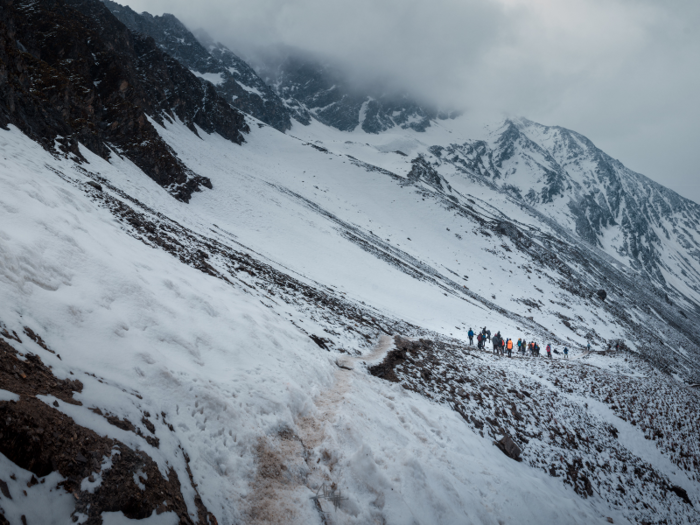
Since the skeletons date back to multiple different time periods, it's likely that they died in different ways, she said.
In their analysis, Harney's team wrote that the findings "refute previous suggestions that the skeletons of Roopkund Lake were deposited in a single catastrophic event."
Harney and her colleagues' analysis did, however, put to rest a few theories about what could have killed the people at the lake.
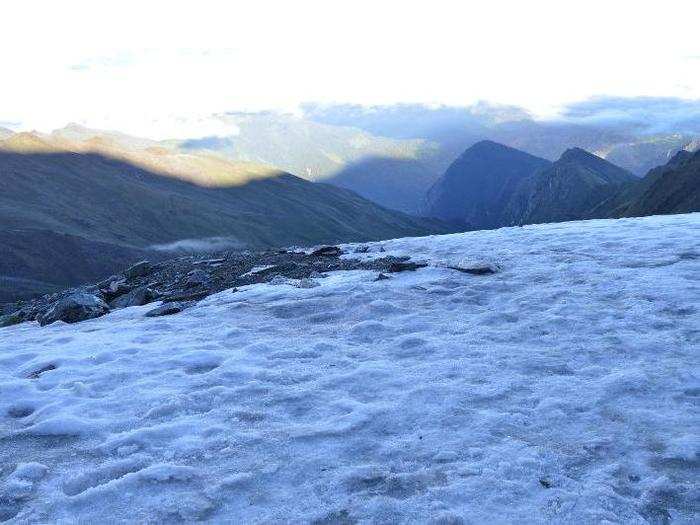
These groups probably didn't die in an epidemic, as a 2004 National Geographic documentary suggested, because the DNA analysis found no evidence of bacterial infection in any of the skeletons.
Battle probably wasn't the cause either, since the skeletons Harney's team examined came from 23 males and 15 females, including children and elderly people, and no weapons were found nearby.
Kathleen Morrison, an anthropologist at the University of Pennsylvania who was not involved in the recent study, offered one other possible explanation: "When you see a lot of human skeletons, usually it's a graveyard," she told The Atlantic.
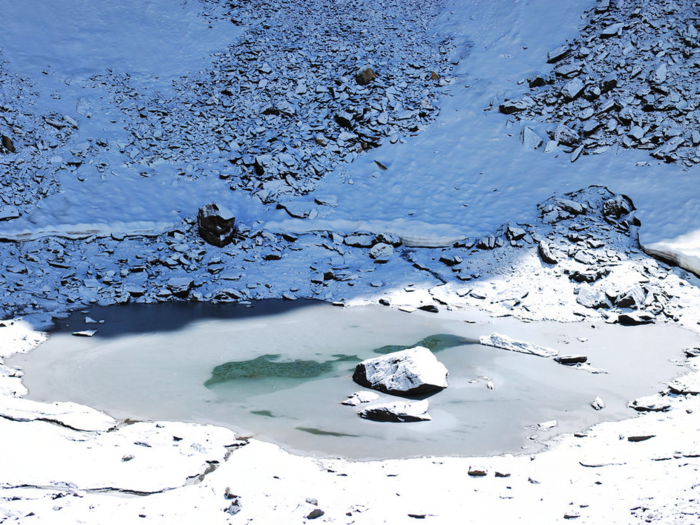
"I suspect that they're aggregated there, that local people put them in the lake," she said, noting that it's unlikely all these people died at the lake's edge.
But Harney thinks the site is too remote to be a graveyard. "I don't know of any evidence that would support this," she said.
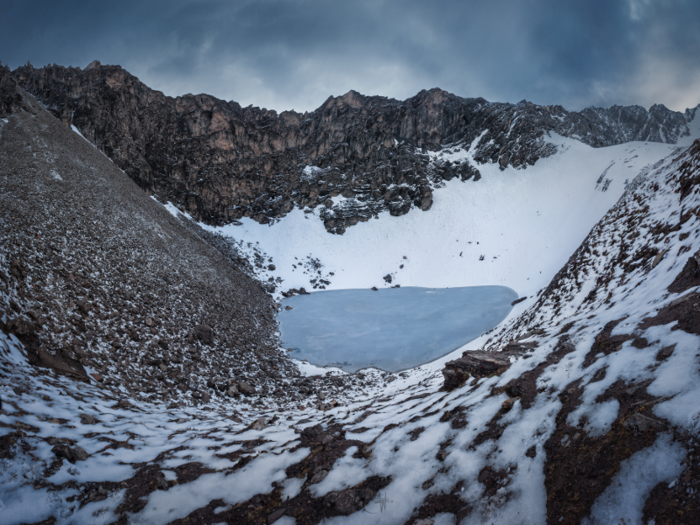
What's more, Harney's team analyzed DNA from present-day groups that live in the areas closest to Roopkund, and did not find many genetic similarities between these individuals and the skeletons. That indicates it's unlikely that a local population once used this site as a burial ground.
Harney said further study of the bones and bodies is needed to figure out how these individuals died.
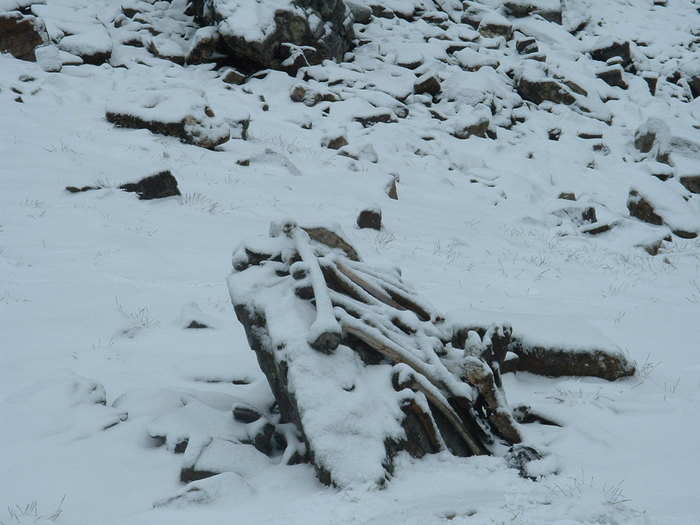
"I think that there are really two parts to this mystery," she said. "The first is, who are these people and why did they go to Roopkund Lake?"
To answer that question, Harney thinks researchers would need to find historical written accounts that describe a journey to Roopkund.
"The second question that I would like to answer is, how did these individuals die?" she said. "There are a large number of remains still at Roopkund Lake that are yet to be analyzed in any way, so it is possible that in the future we will be better able to answer this question."
Popular Right Now
Popular Keywords
Advertisement